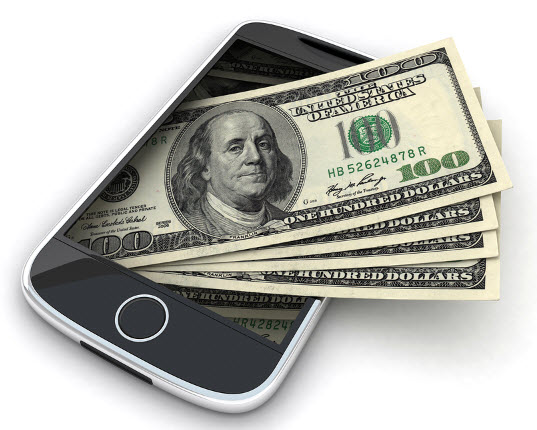At the same time, the messaging service doesn’t appear to intend to replace the fees with ads.
WhatsApp, the popular Facebook owned mobile app messaging service has now announced that it won’t be charging an annual subscription fee to allow users to use the application and its features.
Instead, it will be testing various tools that would allow mobile applications user various communications.
Among them will be to let the mobile app users to take advantage of direct communication with organizations such as businesses through the use of the application. WhatsApp currently has an estimated 900 million users around the globe. It functions across many models of smartphone and several mobile operating systems. While many people might assume that the service would be changed to include third party advertising in order to replace the revenue that will be lost from dropping the subscription rate, this is apparently not going to be the case.
The fee is now going to be waived for the use of the mobile app and no third party ads will be replacing it.
 At the moment, the fee being charged for an annual subscription of WhatsApp has been $0.99 USD or the equivalent for other countries worldwide. That fee is typically waived for the first year, already, and then begins once the second year gets started. That said, this fee is going to be removed completely over the next few weeks.
At the moment, the fee being charged for an annual subscription of WhatsApp has been $0.99 USD or the equivalent for other countries worldwide. That fee is typically waived for the first year, already, and then begins once the second year gets started. That said, this fee is going to be removed completely over the next few weeks.
According to the official WhatsApp blog, it will be opening up a number of tools that allow for direct communication with businesses. It explained this by saying that “That could mean communicating with your bank about whether a recent transaction was fraudulent, or with an airline about a delayed flight.”
This mobile app was among the first ones that make it possible for people to skip over their network charges for texting, while still being able to send and receive text messages over smartphones. This has made the program increasingly popular among younger generations of device users. This service is currently facing rising competition from rivals such as those offered by Google. This may very well be a strategy to boost the competitive edge of the company.
Microsoft’s augmented reality glasses can run for only up to 5 hours before they need to be plugged in.
A recent presentation made by Bruce Harris, the Microsoft technical evangelist, in Tel Aviv, revealed several pieces of insight about the augmented reality Hololens headset, some of which impressed the tech industry and some of which is turning out to be a bit of a disappointment.
Though many details had been revealed back in October, this recent presentation offered more insight.
Back in the original demonstration of HoloLens by Microsoft, last October, there was a great deal revealed about the function of the augmented reality device. However, some key factors were absent in that presentation, including battery life, pricing and other additional functionalities. Now, the recent Tel Aviv presentation from Bruce Harris has shown a great deal more of the finer points surrounding this gadget.
Harris explained that, depending on its usage, HoloLens will last only 2.5 to 5.5 hours before needing to recharge.
 This suggests that if anyone were to invest in one of these devices, they may also want to have a good portable charger with them, as well. After all, using the headset for routine activities will give the individual only just over five hours. However, when pushing the device a little bit harder, that battery life can shrink down to 2.5 hours. For that to become a practical device it will need to be used alongside an external battery pack.
This suggests that if anyone were to invest in one of these devices, they may also want to have a good portable charger with them, as well. After all, using the headset for routine activities will give the individual only just over five hours. However, when pushing the device a little bit harder, that battery life can shrink down to 2.5 hours. For that to become a practical device it will need to be used alongside an external battery pack.
Harris also went on to say that HoloLens will be capable of running virtually any Universal app and it is currently operating on Windows 10 out of the box. Also pointed out in the presentation was that when the headset becomes consumer ready, it will be “totally wireless” and will be capable of connecting to any Bluetooth device or WiFi network. Of course, if WiFi drains this device as much as it can take down many smartphones and tablets, this will only reinforce the need for a portable charger that will be able to recharge it a few times each day.
When it comes to field of view, the HoloLens should provide an experience that can be compared to that of a 15 inch monitor. This field of view was selected in order to make it possible for Microsoft to provide optimal production capabilities in order to keep costs manageable.
 At the moment, the fee being charged for an annual subscription of WhatsApp has been $0.99 USD or the equivalent for other countries worldwide. That fee is typically waived for the first year, already, and then begins once the second year gets started. That said, this fee is going to be removed completely over the next few weeks.
At the moment, the fee being charged for an annual subscription of WhatsApp has been $0.99 USD or the equivalent for other countries worldwide. That fee is typically waived for the first year, already, and then begins once the second year gets started. That said, this fee is going to be removed completely over the next few weeks.
 This suggests that if anyone were to invest in one of these devices, they may also want to have a good portable charger with them, as well. After all, using the headset for routine activities will give the individual only just over five hours. However, when pushing the device a little bit harder, that battery life can shrink down to 2.5 hours. For that to become a practical device it will need to be used alongside an external battery pack.
This suggests that if anyone were to invest in one of these devices, they may also want to have a good portable charger with them, as well. After all, using the headset for routine activities will give the individual only just over five hours. However, when pushing the device a little bit harder, that battery life can shrink down to 2.5 hours. For that to become a practical device it will need to be used alongside an external battery pack.